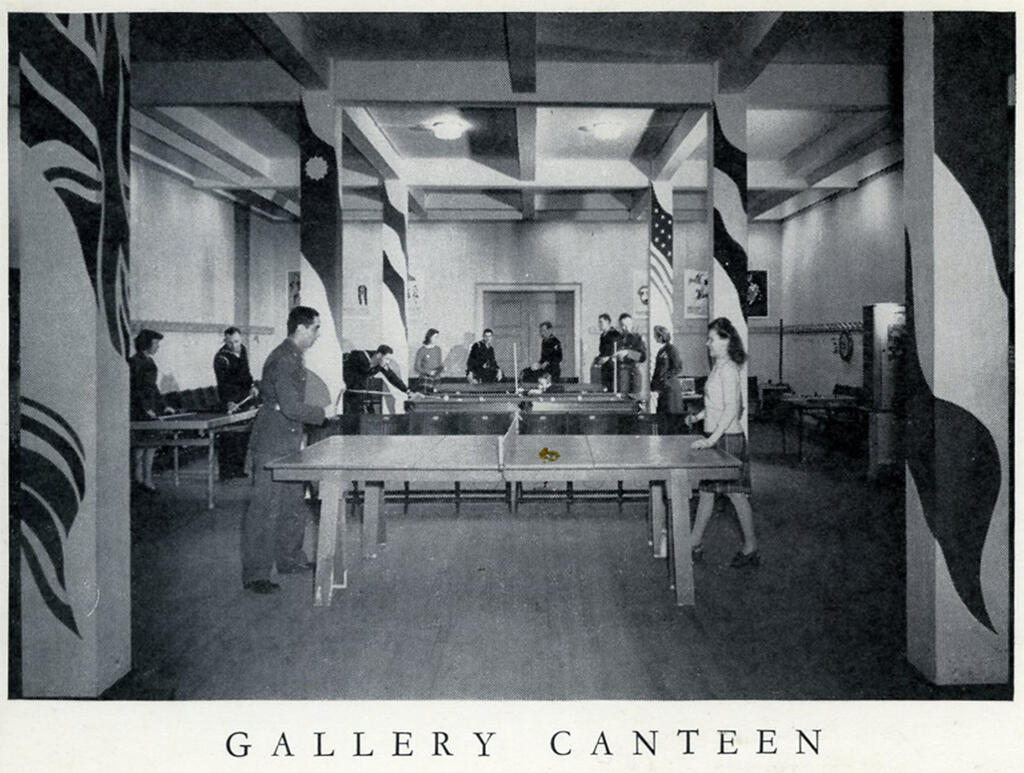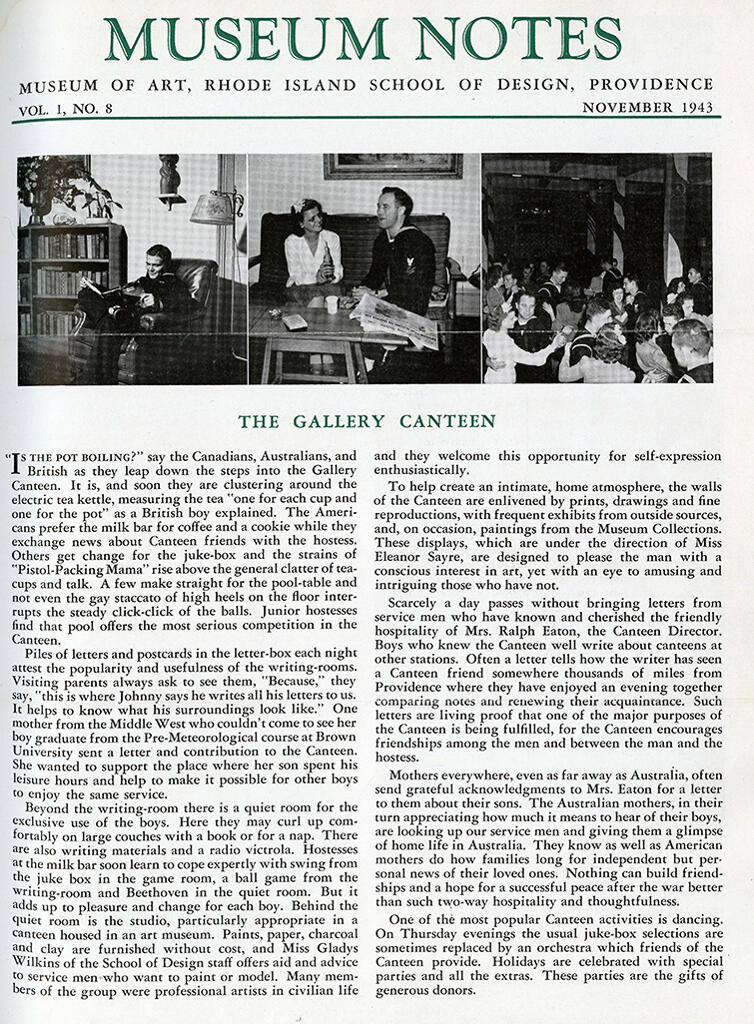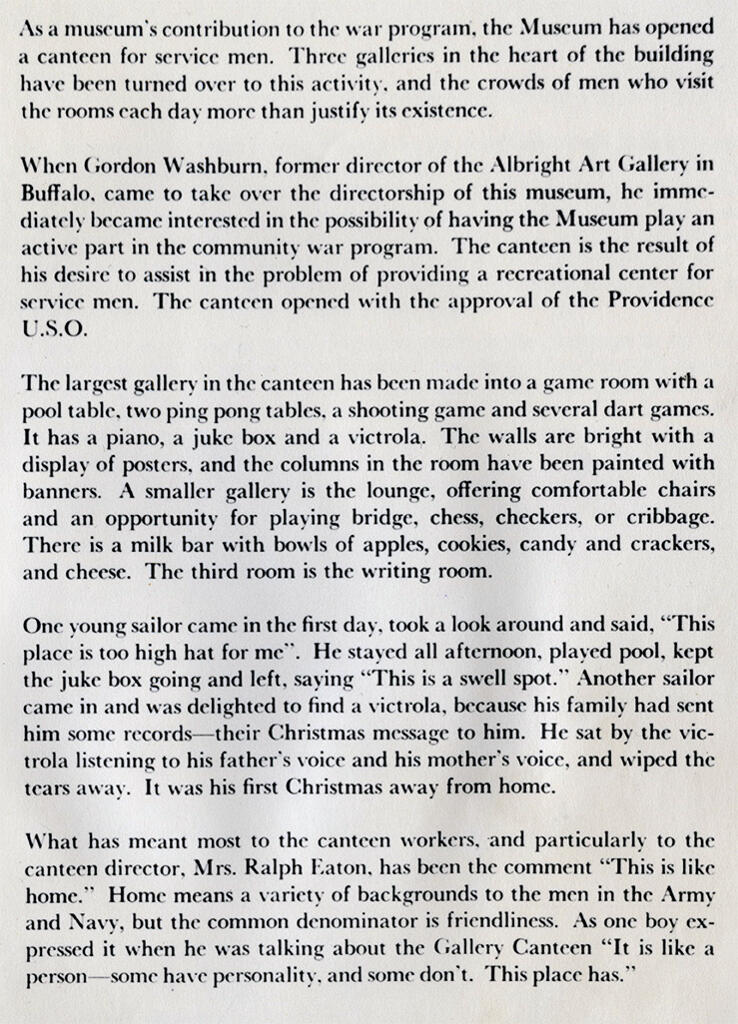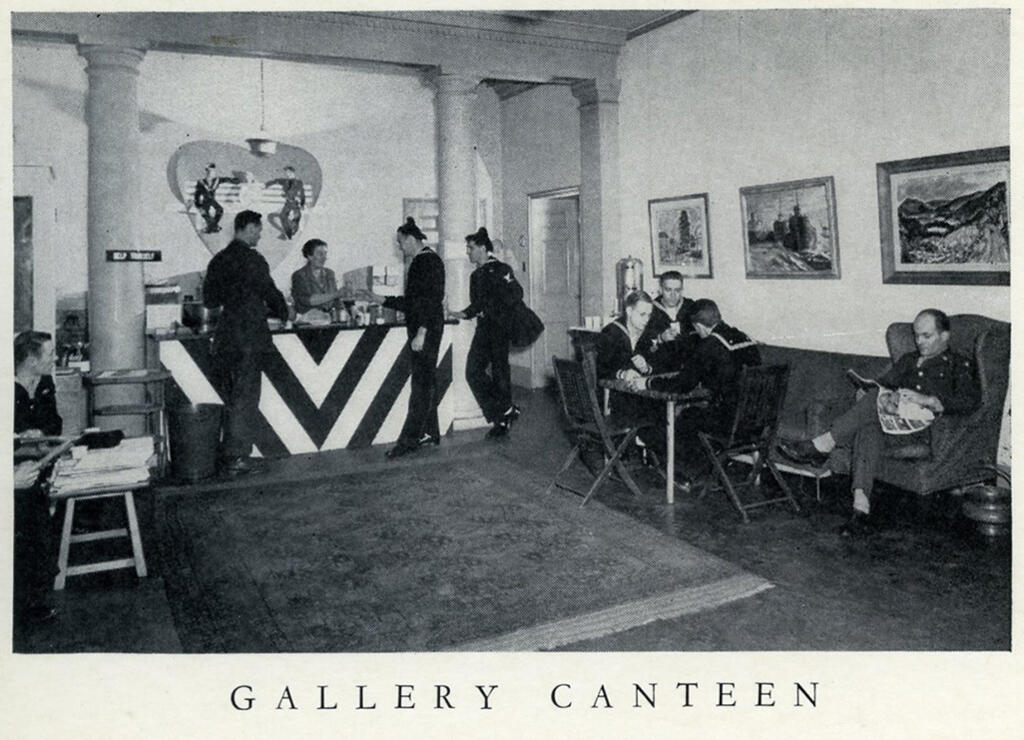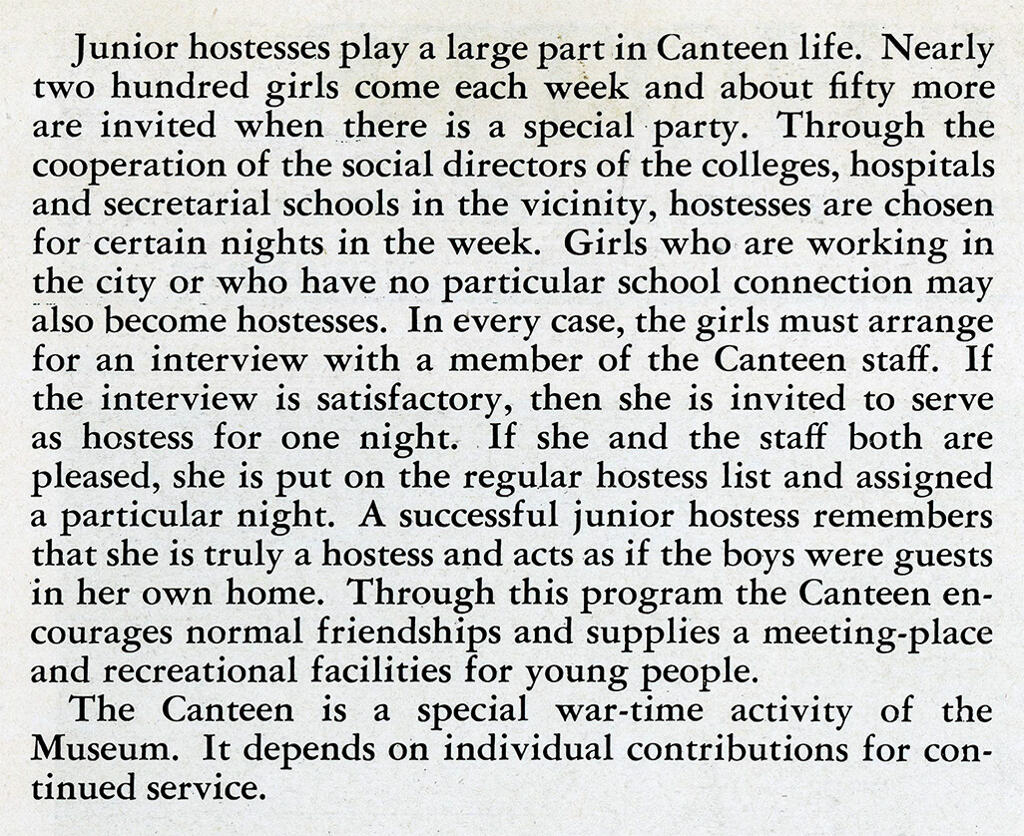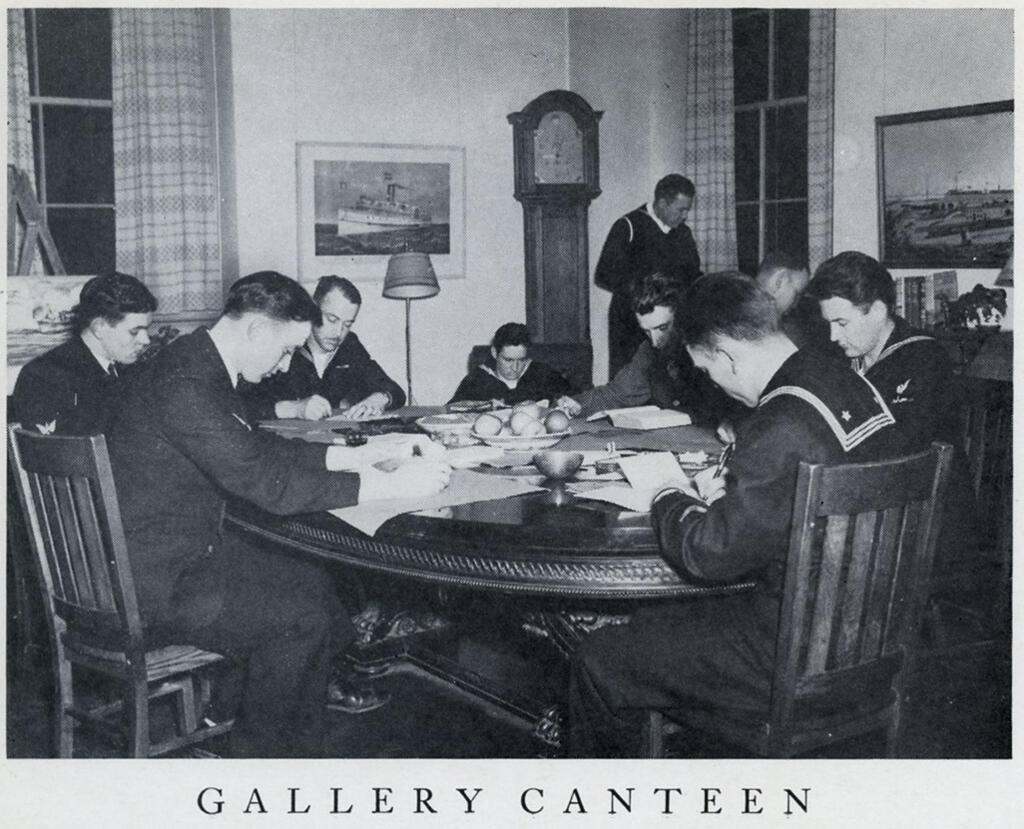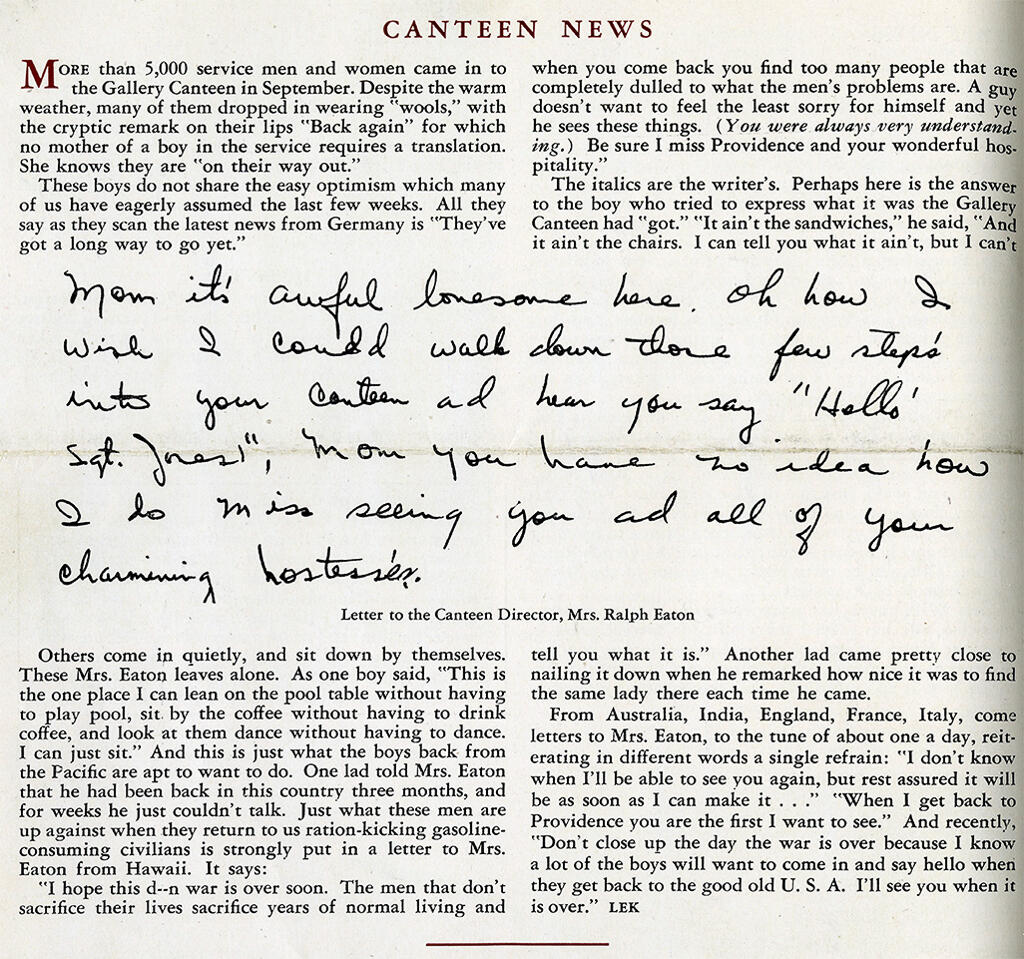Amid contemporary conversations about the role of museums in society and in communities, it’s perhaps important to stop and look back at the ways museums have been used in the past.
May of 1943, a few years into U.S. involvement in WWII, the Waterman Street Galleries were being prepared for the Students’ Annual Exhibition, complete with one gallery entirely dedicated to the demonstration of the School’s war program.
While the School side of RISD was busy cranking nearly 2,000 students through its War Training Program, the Museum side of RISD was busy implementing its own take on assisting the war effort, opening the Gallery Canteen in December of 1942.
From what was written in Museum Notes articles, the Gallery Canteen was a huge success, and at one point claimed to serve 1,600 servicemen a week. Donations of music, books, parties (at one point more parties donated than there were holidays), and armchairs were made. The success of the canteen, however, was less about the number of donations and more about what it provided psychologically to its guests.
From the canteen’s beginnings, there was a goal of creating a place where service people away would feel welcome. The hostesses themselves were put on set schedules so their presence would be predictable to guests, something that the canteen director hoped would enable them to form friendships and routines as easily as possible.
There were places to draw, with art supplies and tutelage provided free of charge, and a “quiet” room for writing letters with free stationary. A coffee bar and “make-your-own milk bar” provided a break for people whose food, lodging, and movements were entirely out of their control. This was sometimes one of the first opportunities a guest had been able to make choices about their own food since enlistment. The canteen director herself seems to have worked behind the bar every day in order to greet guests.
Joanna Cortez
RISD BFA Printmaking, 2017
